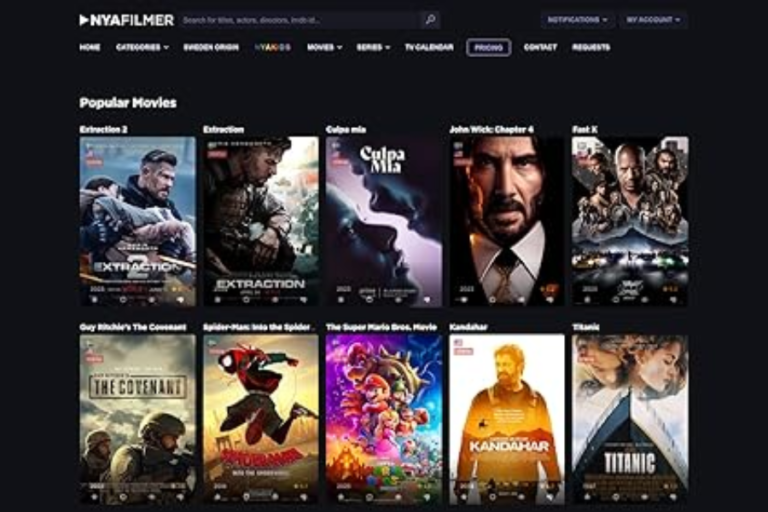Demystifying 127.0.0.1:49342 and Its Role in Development
Introduction:
At first glance, the address 127.0.0.1:49342 may seem complex to those unfamiliar with networking or web development. However, this combination of an IP address and a port number plays a crucial role in a wide array of IT and development tasks. This article explains the meaning, significance, and practical uses of 127.0.0.1:49342, highlighting how it benefits developers, IT professionals, and cybersecurity experts in their everyday operations.
Understanding 127.0.0.1:49342: What Does It Mean?
To fully understand 127.0.0.1:49342, it’s helpful to break it down into two main components:
- 127.0.0.1 – The loopback IP address.
- 49342 – A port number used for specific network communication.
The Function of 127.0.0.1: The Loopback Address
The IP address 127.0.0.1, also known as the loopback address, is reserved for internal communication within a computer. When you enter 127.0.0.1 in your browser, the system connects back to itself rather than reaching out to an external server. This feature is vital for developers, as it allows them to test applications locally before deploying them to live environments.
What Is Port 49342?
The port number in 127.0.0.1:49342 serves as a unique communication endpoint on the system. Port 49342 is classified as an ephemeral or dynamic port, meaning it is temporary and assigned by the operating system when an application needs to establish a connection.
The Purpose of Ports Like 49342
Ports like 49342 are essential for managing and distinguishing between different types of network traffic. For example, while port 80 is used for HTTP traffic, a dynamic port like 49342 can handle temporary client-server communications. This system enables multiple applications to run on the same machine without interfering with one another.
Common Applications of 127.0.0.1:49342
Developers commonly use 127.0.0.1:49342 in local environments for various purposes, including:
- Testing Web Applications
Local servers such as Apache or Nginx can use 127.0.0.1 to securely test websites. - Database Management
Database management tools like MySQL or PostgreSQL often access databases locally via the loopback address. - Debugging and Experimentation
127.0.0.1:49342 allows for a controlled testing environment where new code can be experimented with and debugged without affecting live systems.
How Does 127.0.0.1:49342 Function?
Here’s a simple breakdown of how 127.0.0.1:49342 operates:
- Server Binding
A local server binds to 127.0.0.1 and listens for incoming requests on port 49342. - Client Request
A client, like a web browser, sends a request to 127.0.0.1:49342. - Server Response
The server processes the request and returns the relevant output, such as a webpage or data.
Challenges with 127.0.0.1:49342
While 127.0.0.1:49342 is useful, there are a few potential challenges to consider:
- Port Conflicts
If another application is already using port 49342, a different port must be selected to avoid conflict. - Firewall Restrictions
Some firewall configurations may block traffic to certain ports, requiring manual adjustments to the settings. - Misconfigured Servers
If the server is not correctly set up to listen on the designated port, it can lead to connection errors.
Best Practices for Using 127.0.0.1:49342
To avoid common issues, follow these best practices:
- Choose Random Ports
Select ports within the range of 49152-65535 to minimize the risk of conflicting with other services. - Review Firewall Settings
Ensure your firewall allows traffic through the selected port. - Limit to Local Development
Use 127.0.0.1:49342 only in local development environments and avoid using it in live production setups.
Security Considerations for 127.0.0.1:49342
Although the loopback address offers some security by restricting access to the local machine, there are still potential threats. Key security considerations include:
- Protect Sensitive Applications
Ensure only authorized and trusted applications are allowed to use 127.0.0.1:49342 to prevent misuse. - Monitor Local Threats
Be aware of the potential for malware or unauthorized software exploiting system vulnerabilities. Regular updates to development tools and security scans can help mitigate risks.
How 127.0.0.1:49342 Enhances Development
By using 127.0.0.1:49342, developers gain a secure and controlled environment for testing, debugging, and managing applications. The loopback address ensures internal communication, while the port number allows for multiple isolated processes to run simultaneously.
By adhering to best practices and implementing strong security measures, developers can fully benefit from 127.0.0.1:49342, ensuring smooth workflows and effective problem-solving throughout the software development cycle.
In conclusion, 127.0.0.1:49342 is much more than just a technical term—it is a vital tool for creating, testing, and refining applications in a secure and efficient manner.
Conclusion
In conclusion, 127.0.0.1:49342 serves as an invaluable resource for developers, IT professionals, and cybersecurity experts alike. It enables secure, local communication between applications, providing a reliable testing environment for debugging, development, and experimentation without the risks associated with external servers. By understanding its components—the loopback address and dynamic port number—developers can make the most of this setup to streamline workflows and troubleshoot effectively.
By adhering to best practices, ensuring proper security measures, and staying mindful of potential challenges, developers can leverage 127.0.0.1:49342 to its full potential. Ultimately, it remains a foundational tool that enhances the development and refinement of applications, supporting the creation of stable, efficient, and secure software systems.
FAQs
1. What is the significance of 127.0.0.1 in networking?
127.0.0.1 is known as the loopback address. It allows a device to communicate with itself over the network. This is particularly useful for testing and troubleshooting applications locally before they are deployed to live servers.
2. Why is port 49342 considered an ephemeral port?
Port 49342 is classified as an ephemeral or dynamic port because it is temporary and assigned by the operating system when an application requests a network connection. These ports are generally used for short-lived communications between clients and servers.
3. How can I avoid conflicts with port 49342?
To avoid port conflicts, it is recommended to select ports from the dynamic range (49152-65535) and ensure no other application is using the same port. You can also configure the application to automatically select a different port if 49342 is in use.
4. Can I use 127.0.0.1:49342 in a live production environment?
It is not advisable to use 127.0.0.1:49342 in a production environment, as it is meant for local development and testing only. In production, other static and publicly accessible IP addresses and ports are used to handle network traffic.
5. What security risks should I be aware of with 127.0.0.1:49342?
Although the loopback address restricts access to the local machine, unauthorized applications or malware could potentially exploit vulnerabilities in the system. It is essential to secure the machine by ensuring only trusted applications can bind to the loopback address and to regularly update security software.
6. How can I secure my use of 127.0.0.1:49342?
To enhance security, ensure that your firewall is properly configured to control traffic, limit the use of 127.0.0.1:49342 to local testing, and keep your development tools up to date with the latest security patches. Monitoring for unauthorized software can also help mitigate risks.
Stay in the know with the latest news and updates on blogranker!






